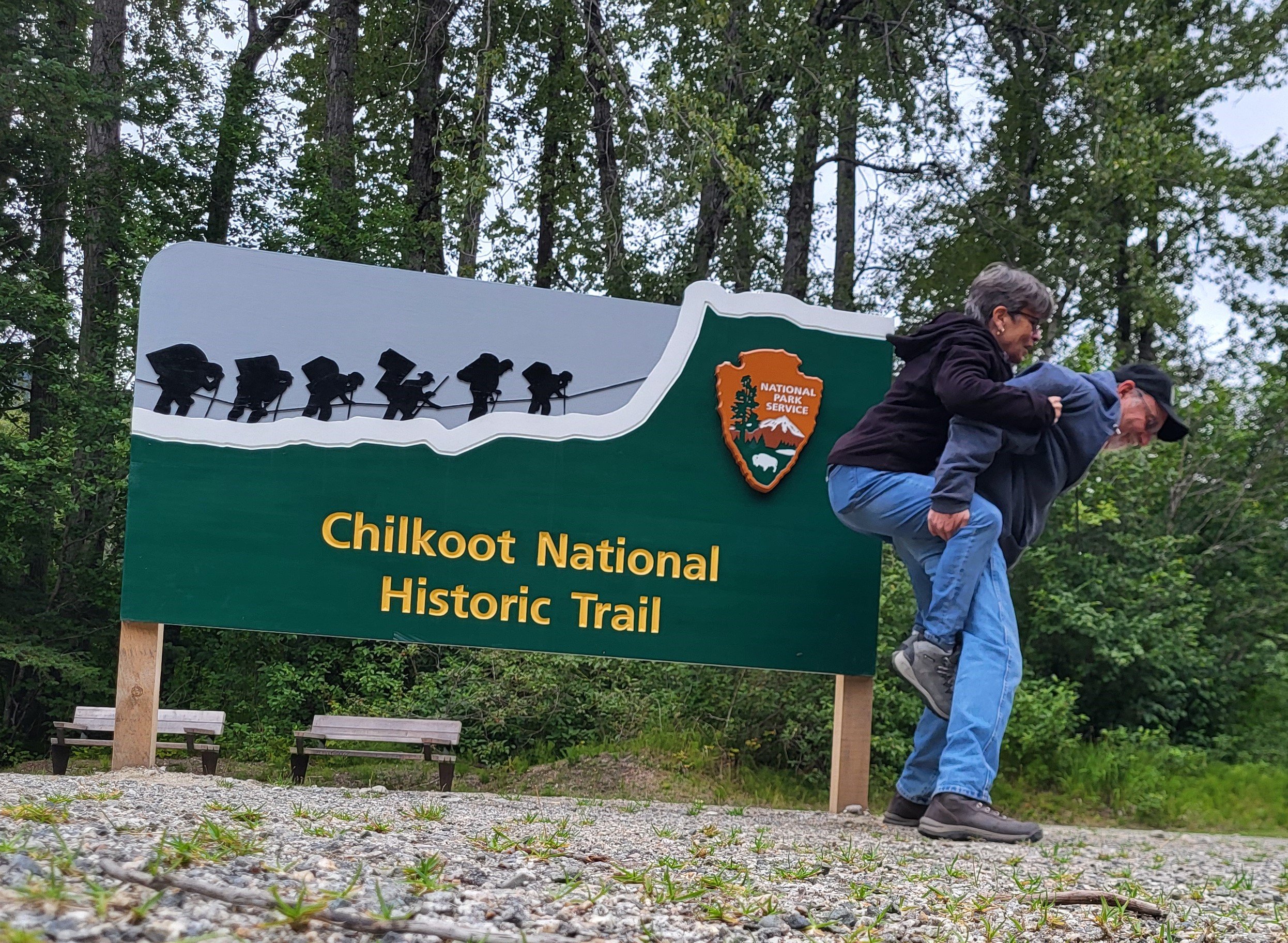North to Alaska
As a member of the geology and mining fraternity, I felt obligated to make a pilgrimage to the site of the Klondike Gold Rush. The site is actually in Canada not Alaska, so north my wife and I headed, “aey”. I wanted to gain a deeper insight into what the “Stampeders” (what the participants of the Klondike Gold Rush were called) went through. There were several routes they could take, including; going by ship around the tip of South America to Alaska’s Arctic Ocean and then by paddle wheeler up the Yukon River, taking a ship to Valdez, AK, and hiking over 500 miles or taking the ship to Skagway, hiking over the infamous Chilkoot Pass and continuing by self-made barges down the Yukon River for 500 miles.
To ensure they didn’t starve and have to be rescued by the Royal Canadian Mounted Police (RCMP), each stampeder had to have a ton of supplies to continue across Canada. This meant that each man had to carry or pay someone to haul the supplies over Chilkoot Pass, usually making up to 30 trips. The hardest part was called the Golden Stairway, the part over an ice field to the top of the pass. This is the part seen in the iconic photos of the long line of men carrying heavy packs trudging up steps cut into the ice.
Camera kept taking the picture at the wrong time. We never did get set.
Near Skagway, Alaska, at the start of this infamous trail, I pondered the hardships suffered by the Stampeders. What is a person willing to risk for a better life- a two-dollar lottery ticket or their very own life by crossing a continent going to somewhere unknown. What causes people, like the Stampeders, to risk everything?
One of the catalysts for this gold rush was that in the 1890s, the world was in a depression and the possibility of striking it rich was a strong attraction. This set up a perfect environment to spread wild rumors that fostered mass hysteria. It is estimated that around 100,000 people from the US attempted to reach the gold fields but only 30,000 actually made it. And, it’s reported that only 300 actually struck it rich. The rest either gave up and went home, went to work for mine owners or started other businesses. That’s a probability of one in 333. Better odds than winning the lottery.
Another question I had was; why the story of the Klondike Gold Rush captivated the interest and imagination of so many? There were other gold rushes that didn’t garner the attention of the Klondike, such as the Cariboo and the Cassiar rushes in British Columbia, Canada. Why was that? Was the Klondike better promoted, were the nuggets found that much bigger or was the timing just right? Was the global depression causing such hardship and desperation that people were willing to “risk it all” for a better life? It seems as though hardship and desperation have been the motivation for mass global migrations throughout human history.
The truth behind the Klondike Gold Rush was that by the time news of the strike got out, the miners that had been there for years had staked the best ground. By the time the Stampeders arrived, there was very little opportunity to stake good ground. The result of their efforts was an arduous adventure full of hardship, peril and disappointment. However, the romance still remains. There have even been songs written and movies made about the Klondike Gold Rush. But misinformation persists. Both Lefty Frizzell’s song of Saginaw Michigan and Johnny Horton’s North to Alaska suggest that the Klondike is in Alaska. It’s actually in Canada’s Yukon Territory.
There is gold in Alaska. Lots of it. There is a broad band of favorable rocks forming what is called the Tintina Gold Belt that hosts many deposits. This belt extends from southwestern Alaska, in a broad arch, across the Yukon into the North West Territories of Canada. Another belt extends along the coast of Alaska through western British Columbia. If you’re prospecting in those belts, chances are good that you’ll find gold along with other metals and valuable rocks.
I was fortunate to have participated in three gold rushes. Not the Klondike type with prospectors running around with gold pans but the rush that develops when a new deposit type is identified or discovered and every geologist is trying to get in on the action.
The first was when the Carlin type of gold deposit was identified in the 1960s. As a cub geologist, I worked on several projects that ultimately developed into mines. The second was the detachment type model that did not pan out and fizzled and the third was when South America opened up to foreign investment and huge gold deposits were discovered. I would have liked to have seen the Klondike gold rush but we are captive to the times we live in. I can only imagine the adventure the Stampeders had. However, I cherish the adventures and challenges I’ve had and look forward to more, especially another gold rush.
